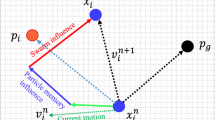Abstract
Flow-through electrodes have been demonstrated to be effective for electroreduction of Cr(VI), but shortcomings are tedious preparation and short lifetimes. Herein, porous titanium available in the market was studied as a flow-through electrode for Cr(VI) electroreduction. In addition, the intelligent prediction of electrolytic performance based on a back propagation neural network (BPNN) was developed. Voltametric studies revealed that Cr(VI) electroreduction was a diffusion-controlled process. Use of the flow-through mode achieved a high limiting diffusion current as a result of enhanced mass transfer and favorable kinetics. Electroreduction of Cr(VI) in the flow-through system was 1.95 times higher than in a parallel-plate electrode system. When the influent (initial pH 2.0 and 106 mg/L Cr(VI)) was treated at 5.0 V and a flux of 51 L/(h·m2), a reduction efficiency of ∼99.9% was obtained without cyclic electrolysis process. Sulfate served as the supporting electrolyte and pH regulator, as reactive CrSO72− species were formed as a result of feeding HSO4−. Cr(III) was confirmed as the final product due to the sequential three-electron transport or disproportionation of the intermediate. The developed BPNN model achieved good prediction accuracy with respect to Cr(VI) electroreduction with a high correlation coefficient (R2 = 0.943). Additionally, the electroreduction efficiencies for various operating inputs were predicted based on the BPNN model, which demonstrates the evolutionary role of intelligent systems in future electrochemical technologies.

Similar content being viewed by others
References
Almaguer-Busso G, Velasco-Martínez G, Carreño-Aguilera G, Gutiérrez-Granados S, Torres-Reyes E, Alatorre-Ordaz A (2009). A comparative study of global hexavalent chromium removal by chemical and electrochemical processes. Electrochemistry Communications, 11(6): 1097–1100
Ayodele B V, Alsaffar M A, Mustapa S I, Vo D V N (2020). Backpropagation neural networks modelling of photocatalytic degradation of organic pollutants using TiO2-based photocatalysts. Journal of Chemical Technology and Biotechnology (Oxford, Oxfordshire), 95: 2739–2749
Barik R C, Wharton J A, Wood R, Stokes K R (2020). Further studies into the flow corrosion cathodic mass transfer kinetics of copper and nickel-aluminium bronze wall-jet electrodes. Corrosion Science, 170: 108660
Barrera-Díaz C, Lugo-Lugo V, Roa-Morales G, Natividad R, Martínez-Delgadillo S A (2011). Enhancing the electrochemical Cr(VI) reduction in aqueous solution. Journal of Hazardous Materials, 185(2–3): 1362–1368
Chang F, Tian C K, Liu S T, Ni J R (2016). Discrepant hexavalent chromium tolerance and detoxification by two strains of Trichoderma asperellum with high homology. Chemical Engineering Journal, 298: 75–81
Chaudhary A J, Goswami N C, Grimes S M (2003). Electrolytic removal of hexavalent chromium from aqueous solutions. Journal of Chemical Technology and Biotechnology (Oxford, Oxfordshire), 78(8): 877–883
Chen G (2004). Electrochemical technologies in wastewater treatment. Separation and Purification Technology, 38(1): 11–41
Chen H M, Lien Lo S (2012). Neural network-based multi-back-propagation prediction model of a domestic wastewater treatment plant for an under-construction sewer system. Journal of the Chinese Institute of Engineers, 35(7): 815–826
Chen P, Cheng R, Meng G Y, Ren Z M, Xu J L, Song P F, Wang H L, Zhang L H (2021). Performance of the graphite felt flow-through electrode in hexavalent chromium reduction using a single-pass mode. Journal of Hazardous Materials, 416: 125768
Chen P, Yin D, Song P F, Liu Y Y, Cai L K, Wang H L, Zhang L H (2020). Demulsification and oil recovery from oil-in-water cutting fluid wastewater using electrochemical micromembrane technology. Journal of Cleaner Production, 244: 118698
Cohen I, Avraham E, Bouhadana Y, Soffer A, Aurbach D (2015). The effect of the flow-regime, reversal of polarization, and oxygen on the long term stability in capacitive de-ionization processes. Electrochimica Acta, 153: 106–114
Danilov F I, Protsenko V S (1998). Electroreduction of hexavalent chromium compounds on the gold electrode. Russian Journal of Electrochemistry, 34: 276–281
Doan H D, Wu J N, Mitzakov R (2006). Combined electrochemical and biological treatment of industrial wastewater using porous electrodes. Journal of Chemical Technology and Biotechnology (Oxford, Oxfordshire), 81(8): 1398–1408
Goulet M A, Eikerling M, Kjeang E (2015). Direct measurement of electrochemical reaction kinetics in flow-through porous electrodes. Electrochemistry Communications, 57: 14–17
Goulet M A, Habisch A, Kjeang E (2016). In situ enhancement of flow-through porous electrodes with carbon nanotubes via flowing deposition. Electrochimica Acta, 206: 36–44
He Y P, Dong Y J, Huang W M, Tang X Q, Liu H H, Lin H B, Li H D (2015). Investigation of boron-doped diamond on porous Ti for electrochemical oxidation of acetaminophen pharmaceutical drug. Journal of Electroanalytical Chemistry (Lausanne, Switzerland), 759: 167–173
Hoare J P (1979). On the mechanisms of chromium electrodeposition. Journal of the Electrochemical Society, 126(2): 190–199
Hoare J P (1983). A voltammetric study of the reduction of chromic acid on bright platinum. Journal of the Electrochemical Society, 130(7): 1475–1479
Ji Q H, Yu D W, Zhang G, Lan H C, Liu H J, Qu J H (2015). Microfluidic flow-through polyaniline supported by lamellar-structured graphene for mass-transfer-enhanced electrocatalytic reduction of hexavalent chromium. Environmental Science & Technology, 49(22): 13534–13541
Jin W, Du H, Yan K, Zheng S L, Zhang Y (2016). Improved electrochemical Cr(VI) detoxification by integrating the direct and indirect pathways. Journal of Electroanalytical Chemistry (Lausanne, Switzerland), 775: 325–328
Jorne J, Roayaie E (1986). Experimental studies of flow-through porous graphite chlorine electrode. Journal of the Electrochemical Society, 133(4): 696–701
Kachoosangi R T, Compton R G (2013). Voltammetric determination of Chromium(VI) using a gold film modified carbon composite electrode. Sensors and Actuators. B, Chemical, 178: 555–562
Ke B, Nguyen H, Bui X N, Bui H B, Nguyen-Thoi T (2021). Prediction of the sorption efficiency of heavy metal onto biochar using a robust combination of fuzzy C-means clustering and back-propagation neural network. Journal of Environmental Management, 293: 112808
Kim M J, Seo Y, Cruz M A, Wiley B J (2019). Metal nanowire felt as a flow-through electrode for high-productivity electrochemistry. ACS Nano, 13(6): 6998–7009
Leita L, Margon A, Pastrello A, Arčon I, Contin M, Mosetti D (2009). Soil humic acids may favour the persistence of hexavalent chromium in soil. Environmental Pollution, 157(6): 1862–1866
Li F H, Gong Y L, Gao J H (2019). Influence of pore aperture and pore density on photoelectrochemical performance of titanium dioxide nano-porous thin films. International Journal of Electrochemical Science, 14: 3628–3643
Li J H, Cheng R, Chen J A, Lan J R, Li S Y, Zhou M, Zeng T Y, Hou H B (2021a). Microscopic mechanism about the selective adsorption of Cr(VI) from salt solution on nitrogen-doped carbon aerogel microsphere pyrolysis products. Science of the Total Environment, 798: 149331
Li Y, Zhang Y X, Xia G S, Zhan J H, Yu G, Wang Y J (2021b). Evaluation of the technoeconomic feasibility of electrochemical hydrogen peroxide production for decentralized water treatment. Frontiers of Environmental Science & Engineering, 15(1): 1
Liu H, Tian G P, Wang W Y, Zhang J X, Wu T S, Ni X Y, Wu Y H (2021). Carbon fiber-based flow-through electrode system (FES) for Cr(VI) removal at near neutral pHs via Cr(VI) reduction and in-situ adsorption of Cr(III) precipitates. Chemical Engineering Journal, 420: 127622
Liu W K, Yang L, Xu S H, Chen Y, Liu B H, Li Z, Jiang C L (2018). Efficient removal of hexavalent chromium from water by an adsorption—reduction mechanism with sandwiched nanocomposites. RSC Advances, 8(27): 15087–15093
Ma W, Gao J, Chen Z, Hu J L, Xin G, Pan Y Z, Zhang Z, Tan D Z (2021). A new method of Cr(VI) reduction using SiC doped carbon electrode and Cr(III) recovery by hydrothermal precipitation. Colloids and Surfaces. A, Physicochemical and Engineering Aspects, 610: 125724
Martinez-Delgadillo S, Mollinedo-Ponce H, Mendoza-Escamilla V, Gutiérrez-Torres C, Jiménez-Bernal J, Barrera-Diaz C (2012). Performance evaluation of an electrochemical reactor used to reduce Cr(VI) from aqueous media applying CFD simulations. Journal of Cleaner Production, 34: 120–124
Nasr M, Ateia M, Hassan K (2016). Artificial intelligence for greywater treatment using electrocoagulation process. Separation Science and Technology, 51(1): 96–105
Nayunigari M K, Gupta S K, Nasr M, Andaluri G, Suri R P S, Maity A (2020). Artificial neural network and cost estimation for Cr(VI) removal using polycationic composite adsorbent. Water and Environment Journal, 34(S1): 29–40
Panousi E, Mamais D, Noutsopoulos C, Mpertoli K, Kantzavelou C, Nyktari E, Kavallari I, Nasioka M, Kaldis A (2019). Biological groundwater treatment for hexavalent chromium removal at low chromium concentrations under anoxic conditions. Environmental Technology, 40(3): 365–373
Peng L, Liu H, Wang W L, Xu Z B, Ni X Y, Wu Y H, Wu Q Y, Hu H Y (2020). Degradation of methylisothiazolinone biocide using a carbon fiber felt-based flow-through electrode system (FES) via anodic oxidation. Chemical Engineering Journal, 384: 123239
Qin H X, Bian Y Y, Zhang Y X, Liu L F, Bian Z F (2017). Effect of Ti(III) surface defects on the process of photocatalytic reduction of hexavalent chromium. Chinese Journal of Chemistry, 35(2): 203–208
Schnoor M H, Vecitis C D (2013). Quantitative examination of aqueous ferrocyanide oxidation in a carbon nanotube electrochemical filter: effects of flow rate, ionic strength, and cathode material. Journal of Physical Chemistry C, 117(6): 2855–2867
Stern C M, Jegede T O, Hulse V A, Elgrishi N (2021). Electrochemical reduction of Cr(VI) in water: lessons learned from fundamental studies and applications. Chemical Society Reviews, 50(3): 1642–1667
Survilienė S, Eugénio S, Vilar R (2011). Chromium electrodeposition from [BMIm][BF4] ionic liquid. Journal of Applied Electrochemistry, 41(1): 107–114
Tian Y, Huang L P, Zhou X H, Wu C B (2012). Electroreduction of hexavalent chromium using a polypyrrole-modified electrode under potentiostatic and potentiodynamic conditions. Journal of Hazardous Materials, 225–226: 15–20
Velasco G, Gutiérrez S, Rodriguez I (2007). Analysis of the use of copper electrode in a filter-press electrochemical reactor for the electrochemical reduction of Cr(VI). ECS Transactions, 3(18): 57–65
Vengosh A, Coyte R, Karr J, Harkness J S, Kondash A J, Ruhl L S, Merola R B, Dywer G S (2016). Origin of hexavalent chromium in drinking water wells from the piedmont aquifers of North Carolina. Environmental Science & Technology Letters, 3(12): 409–414
Welch C M, Nekrassova O, Compton R G (2005). Reduction of hexavalent chromium at solid electrodes in acidic media: reaction mechanism and analytical applications. Talanta, 65: 74–80
Yang Y, Diao M H, Gao M M, Sun X F, Liu X W, Zhang G H, Qi Z, Wang S G (2014). Facile preparation of graphene/polyaniline composite and its application for electrocatalysis hexavalent chromium reduction. Electrochimica Acta, 132: 496–503
Zhang C Y, He D, Ma J X, Tang W W, Waite T D (2019). Comparison of faradaic reactions in flow-through and flow-by capacitive deionization (CDI) systems. Electrochimica Acta, 299: 727–735
Zhang S, Lan H C, Cui Y Q, An X Q, Liu H J, Qu J H (2022). Insight into the key role of Cr intermediates in the efficient and simultaneous degradation of organic contaminants and Cr(VI) reduction via g-C3N4-assisted photocatalysis. Environmental Science & Technology, 56(6): 3552–3563
Zhong W H, Guan H W, Ma X S, Peng X H (2010). Compensatory fuzzy neural network modeling in a wastewater treatment process. In: Proceedings of 2010 IEEE International Conference on Intelligent Systems & Knowledge Engineering. Hangzhou: ISKE 2010
Zhu Q Y, Gu A, Li D, Zhang T M, Xiang L H, He M (2021). Online recognition of drainage type based on UV-Vis spectra and derivative neural network algorithm. Frontiers of Environmental Science & Engineering, 15(6): 136
Acknowledgements
This work was supported by the National Key Research and Development Program of China (No. 2019YFC0408202) and the National Natural Science Foundation of China (No. 21876050).
Author information
Authors and Affiliations
Corresponding author
Additional information
Highlights
• Titanium-based flow-through electrode achieved high Cr(VI) reduction efficiency.
• Flow-through pattern enhanced the mass transfer and reduced cathodic polarization.
• BPNN predicted the optimal electroreduction conditions of flow-through cell.
Data Accessibility Statement
The data and code that support the findings of this study are available from the corresponding author, Peng Chen, upon reasonable request.
Supporting Information
Rights and permissions
About this article
Cite this article
Zhang, X., Meng, G., Hu, J. et al. Electroreduction of hexavalent chromium using a porous titanium flow-through electrode and intelligent prediction based on a back propagation neural network. Front. Environ. Sci. Eng. 17, 97 (2023). https://doi.org/10.1007/s11783-023-1697-x
Received:
Revised:
Accepted:
Published:
DOI: https://doi.org/10.1007/s11783-023-1697-x




